First posted at 2:04pm] According to the U.S. Geological Survey, a 5.8 magnitude earthquake hits outside of Richmond, VA, at 1:51 p.m. The quake was felt in downtown Asheville. More on this story as it develops.
We’ll be following the news at #avlquake on Twitter, and updating.
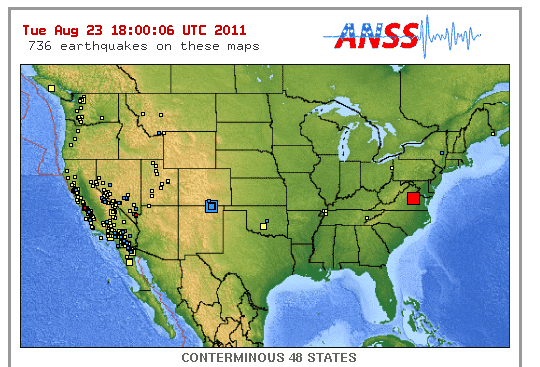
Red square means within the past hour. URL: http://earthquake.usgs.gov/earthquakes/recenteqsus/
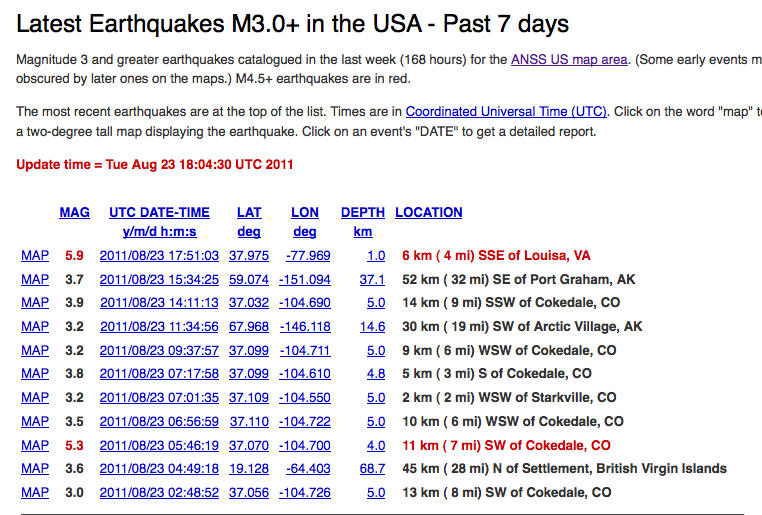
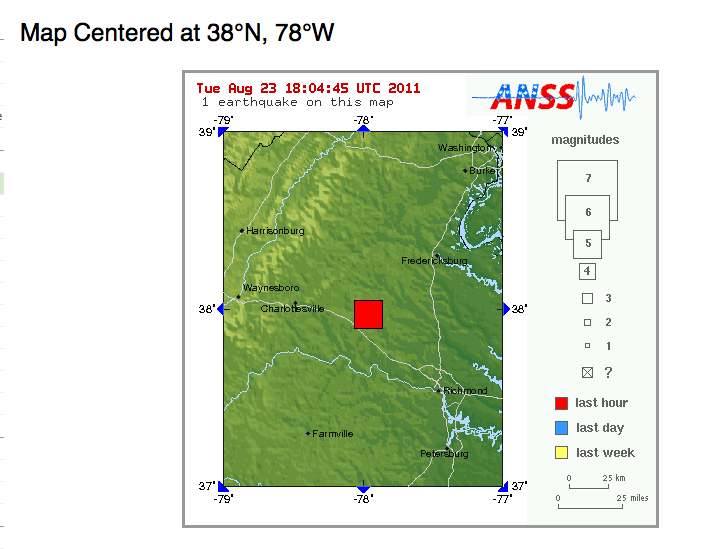
Thin red (pink) lines are known hazardous faults and fault zones. White lines are roads.
Here’s the USGS shakemap of the epicenter (http://earthquake.usgs.gov/earthquakes/shakemap/global/shake/c0005ild/ )
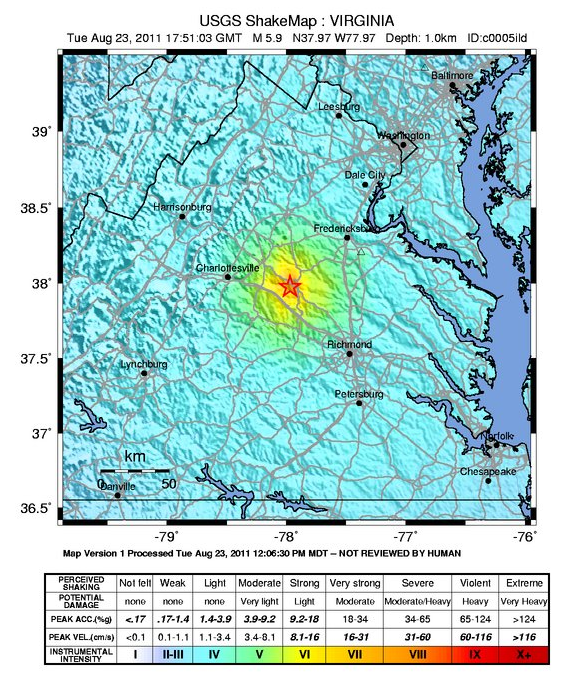
From the USGS site
Where are the Fault Lines in the United States East of the Rocky Mountains?
…fault lines are not a particularly reliable guide to earthquakes or earthquake hazards east of the Rockies. The earthquakes themselves are the best guide.Faults are different from fault lines. A fault is a three-dimensional surface within the planet Earth. At the fault, rocks have broken. The rocks on one side of the fault have moved past the rocks on the other side. In contrast, a fault line is a line that stretches along the ground. The fault line is where the fault cuts the Earth’s surface. Faults come in all sizes, from small ones whose short fault lines you can see in a single road cut, to huge faults whose long fault lines can be seen best in pictures taken from orbiting satellites. Any particular block of the Earth has room inside for more small faults than big ones, so most faults are small. On continents, faults are everywhere, of all sizes, and they formed at many different times during the Earth’s long history.
The largest and most important faults in each state are usually shown on the state’s geologic map. A geologic map shows the locations of rocks of different kinds and ages. Because the geologic map shows the rocks that are exposed at ground level, the map also shows fault lines. However, many faults are entirely buried and do not reach ground level. Therefore, these buried faults have no fault lines, and they are usually not shown on geologic maps. If a buried fault is known at all, information about it is usually published in technical articles in geological journals.
From the USGS page for EHP Quaternary Faults
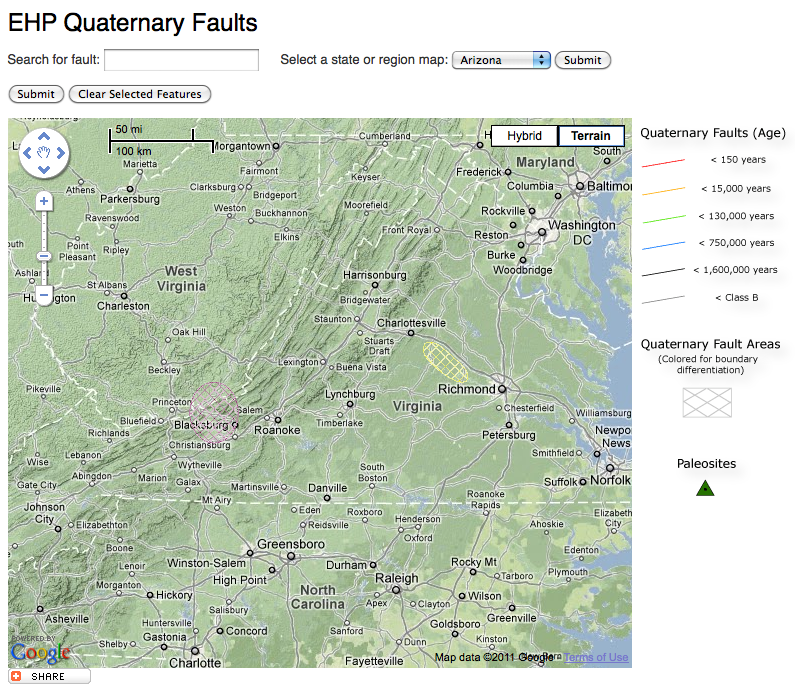
For information about the Southern Appalachian Cooperative Seismic Network, download this PDF document
The Virginia Tech seismic network operates in conjunction with other regional networks in the
ANSS mid-America region to collect high-quality seismic data in Virginia and adjacent parts of the
Appalachian region. Research objectives include earthquake monitoring to maintain continuity of
earthquake catalogs for seismic hazard assessment, studies of the seismotectonics of the region,
earthquake source studies, wave propagation, and the temporal/spatial behavior of seismicity. Outreach
objectives include development and maintenance of regional earthquake catalogs; and dissemination of
information to federal/state/local governments, the engineering community and the general public.
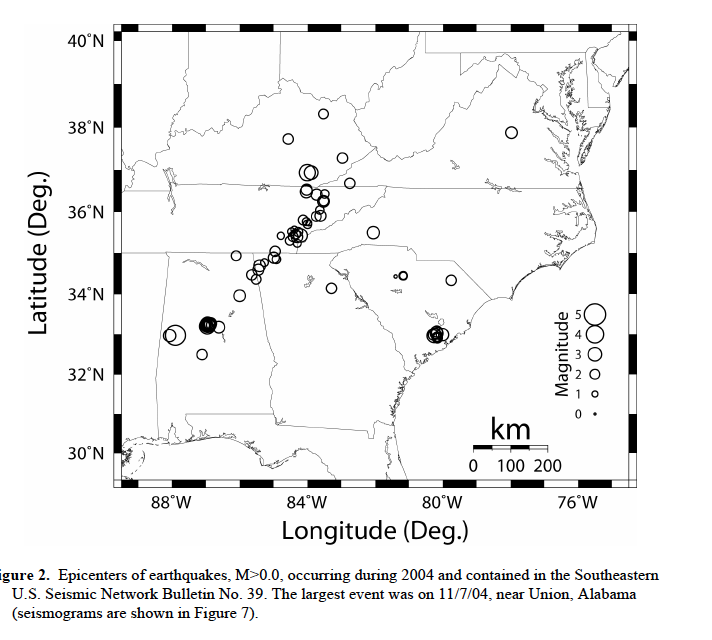
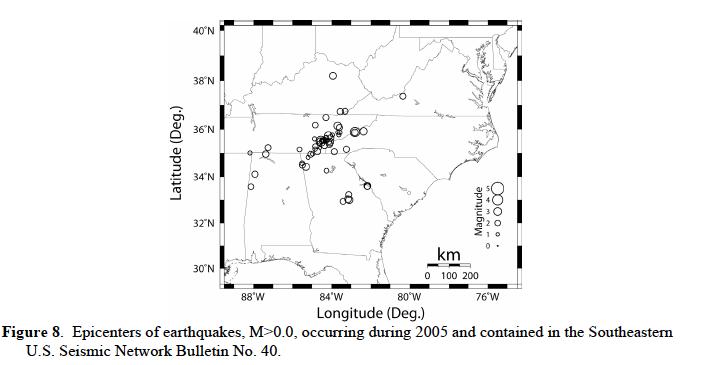
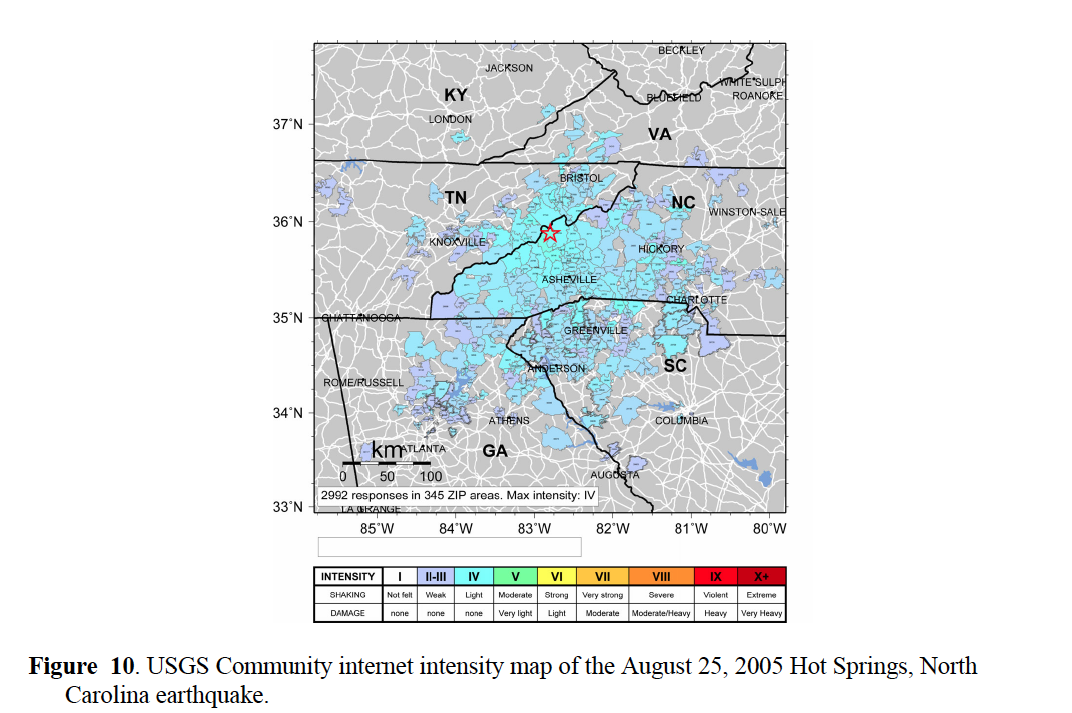
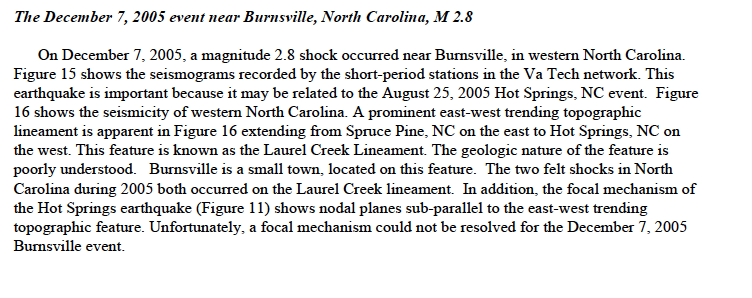
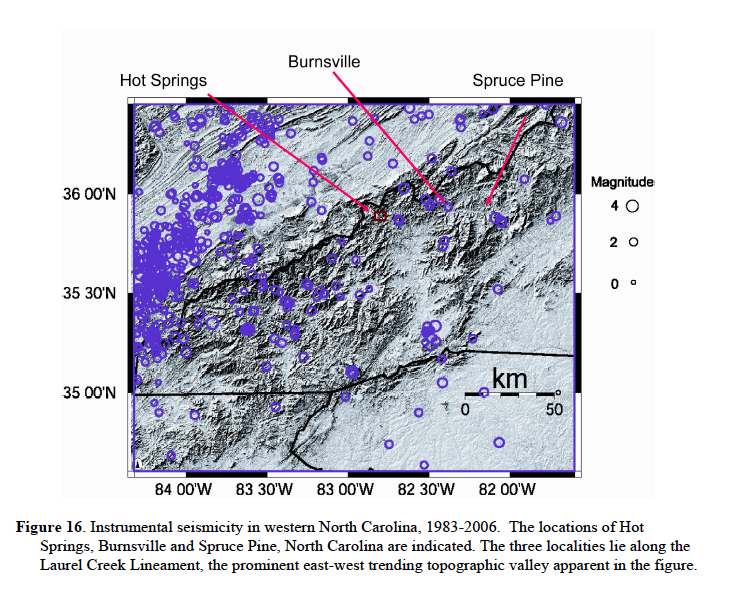





That’s a relief. I seriously thought it was the Mexican food I had last night as believe it or not, I was on the um, throne when it happened.
Felt like I was living in San Diego again… Hot Dam!
For a 5.9 quake that caused no damage or injuries, it seems like it’s an overraction to evacuate the White House, NYMEX, the Pentagon, et cetera. What do you think?
POLL: Are building evacuations due to the 5.9 US East Coast earthquake an overreaction?
Vote: http://www.wepolls.com/p/2001111
I was working at my desk and felt it; this is the second time I’ve had that experience, the first about 15 years ago in Las Vegas. I was literally thrown out of my hotel bed it was so severe, and the epicenter was over 100 miles away. Kind of scary.
Mother Earth is just reminding us that She is not to be discounted by the street preachers who think the guys are in charge.
For such a shallow, relatively minor quake, it sure is being felt VERY far away. IS thAT ODD?
Sorry to pop any bubbles, but this big ol’ hunk of rock and silica with a molten iron core isn’t female. It’s called planet Earth, and despite it’s name from Greek origins, it doesn’t have a gender. Not unless we’d all agree that the Egyptian belief system that claimed the Sun (which keeps Earth alive) is male.
Boatrocker, “nature-based” religions revere the earth as the giver and sustainer of life–creation being a function of the multi-spirited divine feminine, birthing through seeds and eggs, water, fire, wind, cycles of life and death, seasons, etc.
Subsequent “human-based” religions, e.g. Abrahamic and derivatives, revere one human-type deity as the masculine creator of life and the one person who sits in judgment on every other person.
Most “nature-based’ religions consider the sun as feminine and life sustaining.
The Cherokee, for example, believe that the sun is female and the moon is her brother. They call themselves “the fire people” because the sun sent fire to the world, and they still keep an eternal flame burning. (Of course, Christian missionaries converted many Native Americans and tried to destroy the nature religions, but remnants of the nature religions still exist.)
Yes, BCW, but to some it’s just anthropomorphism. My point being made is that a simple earthquake shouldn’t become a venue to debate theology.
Besides, the “disaster movie” aspect of the recent earthquake didn’t hit me until I read a headline after posting my last comment. The Washington Monument sustained small cracks- worthy of some sort of Speilberg-esque overdone CGI scene with fleeing tourists dropping their cameras.
But, since you brought it up, what would the Egyptians (with a polytheistic religion with male and female gods which pre-dated Abrahamic ones) say about the Earth and sun in terms of gender? But maybe that’s for another thread.
Boatrocker, yes, I agree that one earthquake does not necessarily warrant a theological debate, but then lesser happenings do so daily, even the raucous Bele Chere!
After working in Arctic Alaska for ten years, I’m not worried about earthquakes on the east coast unless they come more frequently and get stronger. The Washington Monument crackage is worrisome, from an unpreparedness perspective. Such an edifice would never have been constructed in Anchorage even in past centuries, although tall totem poles were, and most of the native totem poles were destroyed by Christian missionaries, not earthquakes.
I don’t know much about Egyptian polytheism. I’ve mostly studied Arctic/Celtic/Northern European “nature-centered” cultures, and how those cultures and religions are evident in North American today, including how they have been overcome (either beaten down or incorporated) by monotheistic “human-centered” Christianity.
A rule of thumb is that wherever chariots were present, religions were masculine; hence, human-centered war-mongering religious literature these days is best found in action comics.
Action Comics? You can’t blame Superman for it. He’s the one who spun the world backwards to make the earthquake go in reverse!